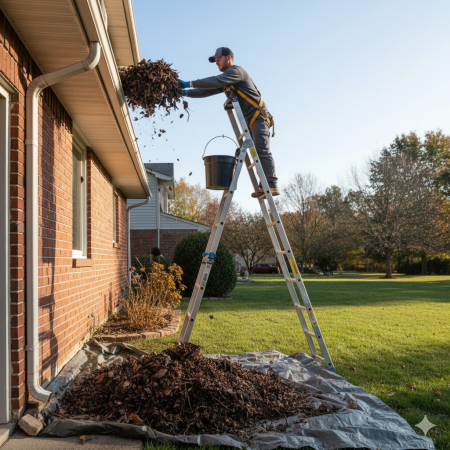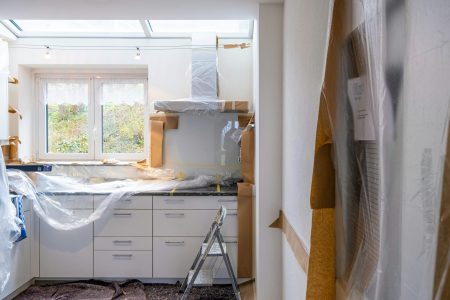The costs in this guide are accurate as of 2023*
When it comes to garden landscaping, there are lots of different things you can do to improve the appearance of your outdoor space. The most popular of these include building a patio, decking, and laying artificial grass or turf.
You could even be looking to get a garden pond, or a raised vegetable bed. Decorating your garden comes with plenty of options. A landscaped garden can increase the value of your home by over £11,000.
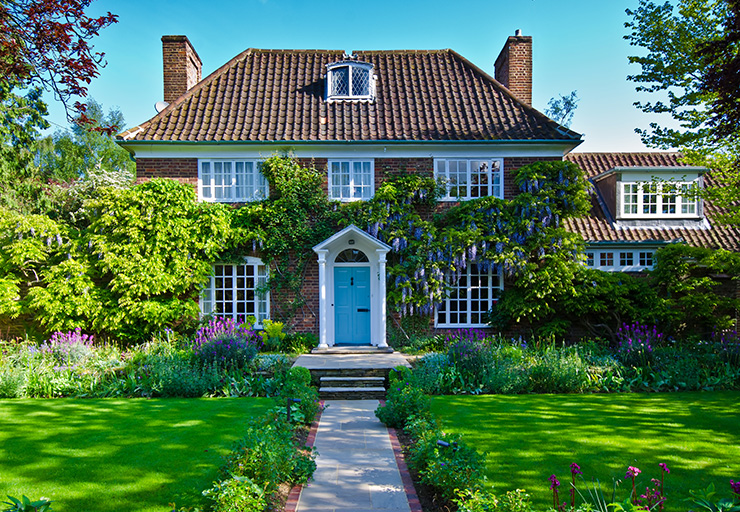
This price guide includes everything you need to know about the different garden landscaping jobs you can get, what you need to consider before you do, and how much they will cost you.
| Landscaping job | Average cost |
| Garden decking | Between £800 and £5,350 |
| Garden patio | Between £550 and £5,600 |
| Laying turf | Between £150 and £2,500 |
| Artificial grass | Between £300 and £5,000 |
| Garden fence | Between £550 and £2,400 |
| Garden pond | Between £2,000 and £11,500 |
Keep in mind that cost of labour rises in London and the South East, so expect to pay more if you live in these areas of the UK. This guide will always clarify where prices include labour and materials, and where it refers to them separately.
How much does garden decking cost?

Garden decking is always a popular choice with homeowners, especially wooden decking, which is considered visually appealing and feels good to walk on.
Not to mention that garden decking is easy and quick to install, and is low maintenance, not requiring the mowing or more frequent cleaning like lawns and patios do.
Decking is a durable option that creates an ideal outdoor living space for you to make the most of your garden.
How much you end up spending will depend on your choice of slabs, and the size decking you want.
| Decking material | Cost per metre (supply only) | Total cost for 15 square metres | Total cost for 30 square metres | Total cost for 60 square metres |
| uPVC | £5 – £10 | £800 – £1,200 | £1,200 – £1,600 | £1,600 – £2,200 |
| Composite | £8 – £12 | £1,900 – £2,000 | £3,400 – £3,700 | £4,900 – £5,350 |
| Trex | £6 – £15 | £1,350 – £1,650 | £2,300 – £3,000 | £3,250 – £4,250 |
| Hardwood | £4 – £10 | £1,550 – £1,700 | £2,250 – £3,000 | £3,400 – £4,300 |
| Softwood | £3 – £6 | £1,000 – £1,200 | £1,600 – £2,000 | £2,200 – £2,800 |
The size of the area you want decked will have the highest impact on costs, but so will things like handrails, and whether you want your deck elevated or not. Consult with your tradespeople on what additional features could cost you. You can hire a professional landscaper here.
Close section ↑
How much does a new patio cost?
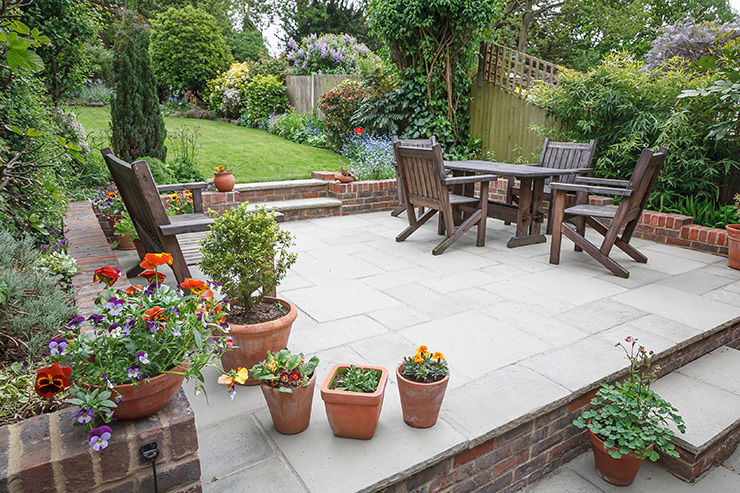
The great thing about patios is that you have a huge range of options, both in terms of the paving you choose, and the design choices you make when laying the paving.
Paving improves the aesthetics of your garden in a way that’s long lasting and fairly low maintenance. A paved patio can even prevent flooding and improve your home’s drainage!
Materials can cost you a range of prices. Below are some average costs for four common patio materials, using three different sized patios.
| Patio material | Average cost for 10m2 | Average cost for 20m2 | Average cost for 40m2 |
| Slate | £600 – £700 | £1,200 – £1,400 | £2,400 – £2,800 |
| Brick | £550 – £900 | £900 – £1,400 | £1,400 – £1,800 |
| Concrete | £500 – £600 | £1,000 – £1,200 | £2,000 – £2,400 |
| Stone | £800 – £1,350 | £1,400 – £2,500 | £2,400 – £4,600 |
Other things that can impact these prices include whether you’ll need soak ways and drainage built in. In some cases, you might also need to hire a skip to dispose of waste and excess soil.
Close section ↑
How much does it cost to lay turf?

Laying turf in your garden is the quickest way to get an instant, aesthetic result. Rather than planting seeds and waiting a few weeks for grass to grow, laying turf allows you to have a fully functioning lawn within a couple of days of laying.
Laying turf is more affordable than buying and laying artificial grass, but it does require more maintenance, including watering and mowing the lawn frequently.
| Type of turf | Small (50 square metres) | Medium (75 square metres) | Large (125 square metres) |
| Budget option | £150 – £275 | £200 – £350 | £390 – £450 |
| Meadow turf | £880 – £1,100 | £1,200 – £1,500 | £2,100 – £2,500 |
| Premium turf | £180 – £320 | £240 – £400 | £420 – £740 |
| Wildflower turf | £880 – £1,100 | £1,200 – £1,500 | £2,100 – £2,500 |
| Ornamental turf | £180 – £320 | £240 – £400 | £420 – £740 |
| Hardwearing turf | £175 – £300 | £220 – £380 | £420 – £530 |
If you do prefer the natural feel and smell of real grass, then laying turf on your lawn is a great option that will make your garden truly feel like an outdoor space.
Close section ↑
How much does it cost to lay artificial grass?
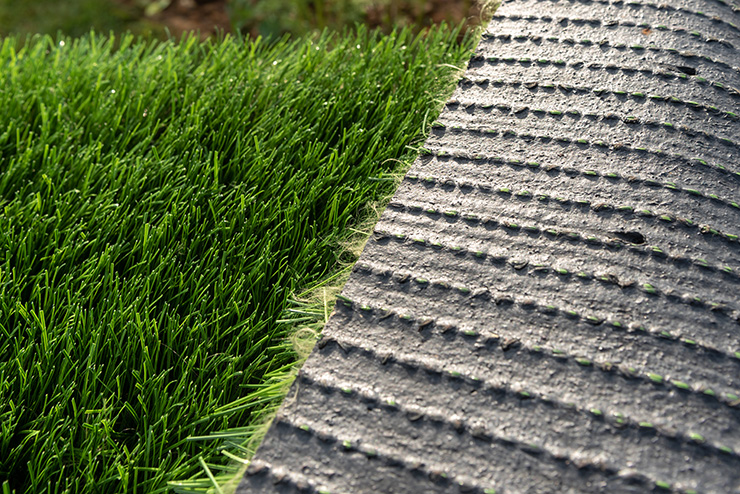
Or you could decide to get artificial grass, which comes with a wide range of benefits:
- Always looks neat, green, and tidy, all year round
- Very low maintenance and convenient
- Doesn’t require mowing or watering
- Very pet friendly (can’t be dug up, stays hygienic and easy to clean), and child friendly (doesn’t require pesticides and attracts less bugs)
- Aesthetic appearance and a range of options in terms of colour, density, texture, and length
- Great drainage when it rains, and dries faster than natural grass
- More environmentally friendly over time than real grass (due to petrol powered lawn mowing producing pollution)
However, artificial grass is also more expensive to buy, and takes longer to install. It has a shorter lifespan than real grass (around 7-15 years), and you also don’t get that fresh grass smell.
Which you decide to go with will depend on what your priorities are. If you don’t have a lot of spare time, then artificial grass might be the better option.
| Budget artificial grass | Mid-range artificial grass | Premium quality artificial grass | |
| Small garden (40m2) | £300 | £700 | £1,200 |
| Medium-sized garden (70m2) | £1,000 | £1,350 | £2,400 |
| Large garden (150m2) | £2,300 | £2,800 | £5,000 |
It can take between 1 and 4 days to lay artificial grass in your garden, depending on its size.
Close section ↑
How much does it cost to fence a garden?
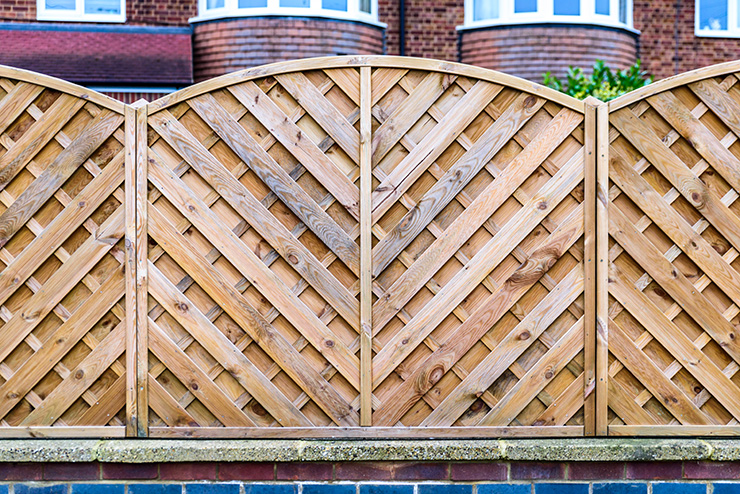
One of the main reasons to get a fence is that it can help you keep pests out of your garden. This is especially good if you grow your own plants and vegetables, as a fence can protect them from getting eaten by unwanted intruders.
Fences also offer your plants a protective barrier from the wind and sun, and have aesthetic benefits, as you can choose from a wide range of designs, colours, and materials.
The average cost to fence a 4ft high, 36ft long fence is between £550 and £700. For a 200ft fence, the average price goes up to around £1,600 and £2,000.
The average cost to fence a 6ft high, 36ft long fence is between £600 and £1,000. For a 200ft fence, the average price goes up to around £1,800 and £2,400.
The price of your fencing will range, depending on your choice of materials and the type of fencing panels you want.
For example, if you were to want timber fence posts, they would cost you:
- Between £850 – £1,100 for hit and miss panels
- Between £700 – £950 for close-board or featherboard panels
- Between £900 – £1,250 for Venetian or slatted panels
- Between £600 – £750 for Lap panels or traditional panels
Add between £100 and £200 more if you want gravel boards with your timber posts.
If, instead, you wanted your fence made from concrete, these panels would cost you:
- Between £900 – £1,000 for hit and miss panels
- Between £800 – £1,200 for close-board or featherboard panels
- Between £1,000 – £1,300 for Venetian or slatted panels
- Between £650 – £800 for lap panel or traditional panels
Add roughly between £300 and £400 more if you want gravel boards with your concrete posts.
What is the cheapest fence to build?
If you’re thinking of getting a fence for your garden but want to buy the most budget-friendly option, then you should look into PVC, aluminium, vinyl, or chain-link fencing, as these materials are the most cost-friendly.
Whereas timber fence posts cost around £25 per post, on average, a foot of chain-link fencing costs £10 (supply costs only).
Close section ↑
How much does it cost to build a garden pond?
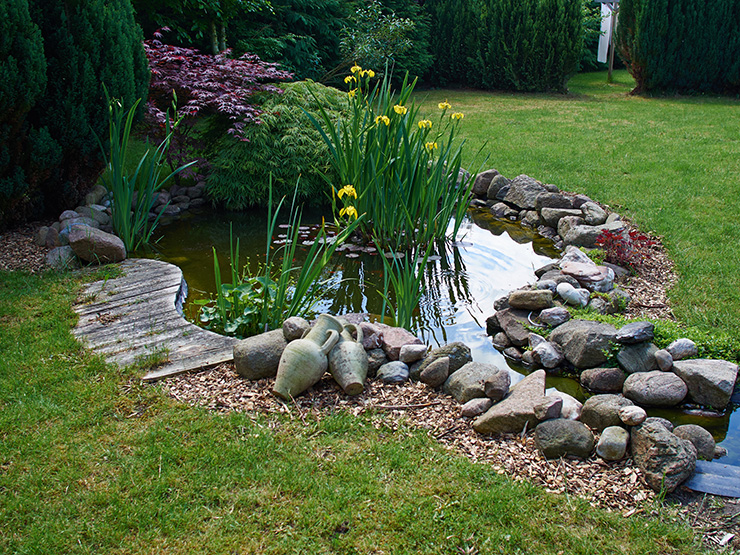
Garden ponds look beautiful, create a focal point in your garden design, and encourage wildlife, such as frogs and birds. You can decorate your water feature with flowers and plants to create a relaxing environment to enjoy whenever you sit in your garden.
Garden ponds are great at moderating the temperature of your outdoor space, whilst also making your garden appear lighter, due to the reflective quality of water.
How much you spend on your pond will depend largely on its size.
| Pond size and type | Average cost |
| Small garden pond | £2,000 – £2,200 |
| Medium sized garden pond | £3,000 |
| Large garden pond | £6,000 |
| Koi pond | £11,500 |
On average, a garden pond takes between 3 and 10 days to build, depending on how large you want it to be.
These prices include the cost of installation, and the decorative finish around the pond, usually made from bricks.
Close section ↑
Other garden landscaping jobs
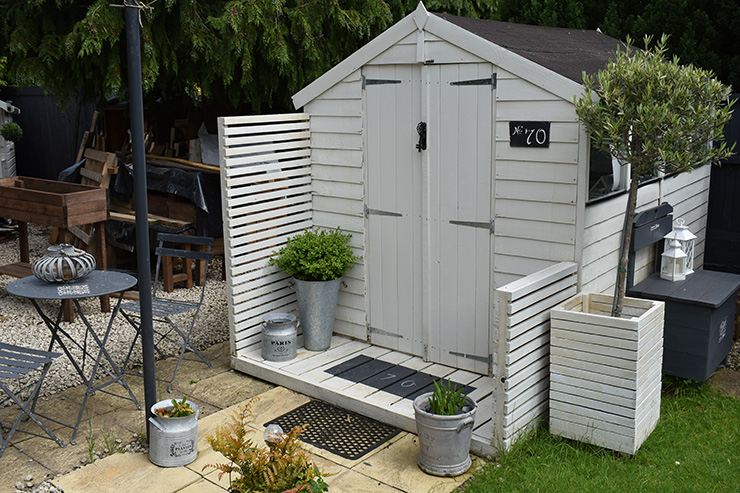
You may also be thinking about getting a garden shed to store tools and equipment, or a vegetable bed to start growing your own produce.
Small additions like these can elevate the look and feel of your garden. How much you’ll spend depends on size and your choice of materials.
| Type of garden landscaping project | Material | Average cost |
| Shed 6ft x 4ft | Wood | £600 |
| Shed 8ft x 4ft | Wood | £800 |
| Shed 12ft x 8ft | Wood | £1,100 |
| Raised vegetable bed | Cedar wood | £200 – £300 |
| Raised vegetable bed | Limestone | £500 – £600 |
| Raised vegetable bed | Brick | £300 – £500 |
| Garden lighting | Low voltage exterior light | £140 – £165 |
| Clearing garden waste | Independent company with a van | £80 – £300 |
These prices include the cost of laying a concrete foundation underneath your shed.
You may also be interested in buying garden furniture like deck chairs or a garden swing. How much you spend on these will depend entirely on your budget.
Close section ↑
How much does it cost to hire a garden designer?
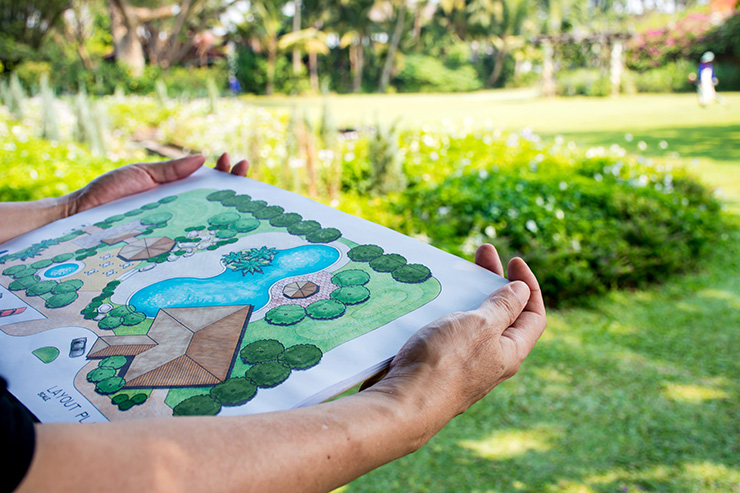
You could spend anywhere between £600 and £4,500 to hire a landscape designer to design your outdoor space. Where you live in the UK will affect costs.
You don’t need a garden designer, but hiring one comes with plenty of benefits:
- A stronger design concept – your garden designer will show you a range of sketches, images, samples, and a range of their ideas to help you figure out what exactly you’re looking for. Mood boards and concept plans will help you visualise your new garden before it’s even built
- Managing the project – if you have a busy schedule and don’t have time to oversee your garden renovation yourself, your garden landscaping designer can oversee the whole project, making sure that everything is done correctly, and built according to your vision and preferences
- Attention to detail – your garden designer is an experienced professional who will spot and account for elements of your project that you might overlook, such as climate, privacy from neighbours, and eyesores, as well as issues with accessibility
- Managing your budget – your garden designer will also make sure that you stay on track and don’t lose sight of how much you’re spending
- Contacts – landscaping designers have a lot of contacts in the industry, and can help you secure good quality, reliable supplies and materials at affordable rates
Are you thinking of hiring a garden designer? You can do so here.
Close section ↑
Do you need planning permission for garden landscaping projects?
You won’t need planning permission for most landscaping work, such as building a shed in your garden, which is covered under permitted development rights and doesn’t require planning applications, (if it follows certain requirements). For the full set of rules on sheds and other outbuildings, visit here. Garden ponds are under the same regulations as outbuildings.
You do not require permission to plant trees and hedges, though you may do to remove them, so keep this in mind. For more information on trees and hedges, see here.
Planning permission will most likely be required if you want to pave your front garden or turn it into a driveway. For more on paving regulations, visit here.
When it comes to decking, if the decking is less than 30cm above the ground and covers less than 50% of the total area of your garden, then you will not require planning permission. For more information on this, see here.
If you aren’t sure what you can and can’t do, your tradespeople will be able to advise you. You can hire them here.
Close section ↑
How to save money on landscaping costs

The below ten tips are a few things you can look out for before you start your landscaping project, to make sure you make the most of your resources and cut down on costs:
- Always do your research. In terms of your garden plants, there is plenty of free advice on the internet and in books about where to place specific plants, to help you avoid hurting your plants by planting them in the wrong place. When it comes to hiring labour, ask for several quotes before you hire anyone, as having a good sense of how much the project could cost you is a good idea. Always comparison-shop with your plants as well, and avoid impulse buying to stay on track with your budget. You can hire a gardener here.
- Design your garden yourself. If you’re on a budget, then you might not want to hire a professional garden designer. As long as you do your research, get inspiration from online content and gardening magazines, and consider the implications of your different choices, you shouldn’t have any problems going the DIY way. Always check if your project conforms to planning permission regulations. We don’t recommend hiring cheap labour, as this can raise costs in the long run when mistakes and complications result in more money spent on repairs.
- Buy plants during sales. If you do a bit of research, you will find that retailers and gardeners often have discounts and sales at certain times of the year, such as at the end of growing season. Buying plants during these periods will save you money, and you can often find plant pots and other garden items for up to 50% off. We recommend you look for perennial plants rather than annual ones, to cut costs on replacing plants every year.
- Think about your water bill. Watering your garden frequently will cost you money on your water bills. Opting for artificial grass is more cost-effective in the long term, as is buying drought-resistant flowers, which will reduce the amount of water you consume. Installing an automatic irrigation system can also help you reduce your water usage.
- Don’t get carried away. When you first sit down to brainstorm what you want your garden to look like, you may well get carried away adding tons of features that you probably don’t need, and that will raise costs. Scaling back, and focusing on the things you really want, will make sure you stick to a reasonable budget for your landscaping project.
- Go for cheaper, but sturdy, materials. When it comes to hard landscaping materials (such as for pathways and patios), expensive materials can make costs skyrocket. But cheap materials are also far less enduring. Opting for more budget-friendly, but resilient materials, such as gravel, are a good way to get the best of both worlds.
- Avoid garden centres. You don’t have to go to a garden centre to buy your plants. Plants are often more expensive in such locations because the plants are considered of a higher standard. If you have time to look around, (and time to give your plants the proper care), buying them from supermarkets or even from online marketplaces like Ebay could be a cheaper solution. Also try out salvage yards for second-hand materials like timber boards and fencing. These will be cheaper than buying brand-new items.
- Bulk buy your materials. See if your neighbours are interested in shopping together. Buying garden products and tools in bulk can help bring costs down, saving you all a lot of money.
- Don’t throw away what you already have. It’s easy to make the mistake of throwing everything away and starting your new garden from scratch, but you might find that using what you already have (especially your more long-lasting materials and healthy plants), could help cut down costs.
- Low-cost accents can have a big impact. If you’re deciding where you should invest your money, we recommend you choose high-quality materials for your permanent and most used garden elements. On the other hand, smaller, decorative elements of your garden don’t need to cost a fortune, as low-investment decorations can elevate the look of your garden, without breaking the bank.
Close section ↑
Conclusions
A garden makeover is a highly sought-after home improvement, especially during the warmer months of the year, when the nice weather allows you to make the most of your outdoor space.
There are so many different options for you to choose from, from materials to design features. How much you spend will therefore be dictated by your vision for the project, and where you live in the UK, as cost of labour rises in London and the South East.
If you’re thinking of landscaping your garden, let us know what you have in mind, and get some free quotes today. We suggest you look around and ask for multiple quotes before you settle on your chosen tradespeople.
*The Rated People cost guides are produced in collaboration with the quote-building platform PriceBuilder, and a range of tradespeople across the 30+ trades on our platform were consulted. Please note that the prices included are for guidance only – how much you end up spending will depend on the specific requirements of your project.
Read the full article here




